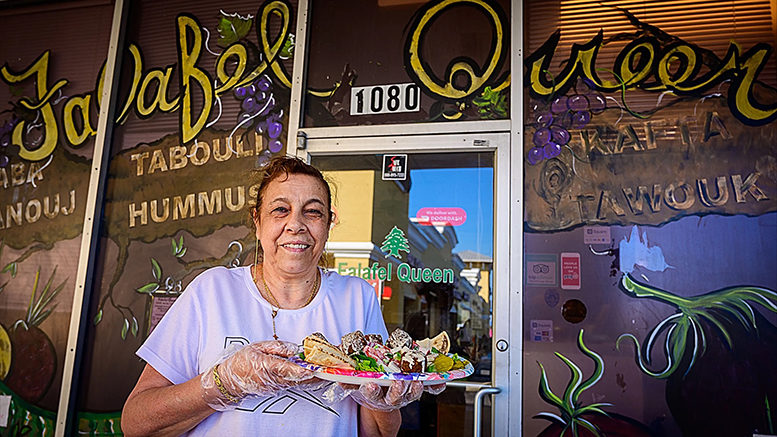By Sara Orr
Over the past year, wholesale food prices have risen 13.2%, compared to an average yearly increase of 3.5%. Everyone from big businesses to the average grocery shopper have been affected by this rise in inflation. The restaurant industry has especially taken a hit, and maybe most affected have been small, family-owned restaurants like St. Augustine’s Falafel Queen.
As you walk into the mom-and-pop restaurant, there is a chalkboard sign behind the register that reads, “Due to the rise of products such as meat and produce, we have had to raise our prices to accommodate. $1.00 more per meal, $0.50 more per sandwich.”
Eva and Bob Larocque are the owners of this restaurant, and they say they truly enjoy living in St. Augustine. They also have a group of loyal customers who frequent their restaurant for its unique menu and incredibly homey feel.
The restaurant is decorated with images of Lebanon where one of the owners, Eva, is from. There are aged, framed news articles documenting their opening 12 years ago, and a small shelf with Lebanese dry goods for purchase.
While Bob and Eva have not had any issues with complaints about raising prices — according to Bob “most customers said they would pay even more” — affordability is something they care a lot about, and they said it hurts to have to charge more for their food.
“We aren’t getting rich off of what we do,” he said.
However, about 5 months ago, the couple saw profits start to decrease, and they realized they would have to raise prices in order to maintain their profit margin.
They go to the Jacksonville farmers market twice a week to buy produce, and to warehouse suppliers to buy dry goods and supplies. Even with buying locally sourced and affordable supplies, prices for some of their food have nearly quadrupled.
“When it comes to money, the price of gas even affects us,” he said. “We have to drive our van to Jacksonville for groceries, and filling up the tank puts a dent in our numbers.”
The National Restaurant Association says that there are more complicated expenses that go into operating a small restaurant. There are food costs, maintenance costs, rent costs, labor costs and more. All of these compile and make it difficult for them to make a profit.
In 2021, restaurant industry sales were $65 billion less than 2019’s pre-pandemic levels. This drop makes many wonder in the industry it they will ever get back to where they were.
It is not only restaurant owners that are struggling. Lucy Hubbard-Wright, a senior student at Flagler College and employee at Harry’s Seafood Bar and Grille in St. Augustine, said she has been affected by inflation as well.
“I have noticed my hours are being cut drastically,” she said. “There are definitely less people on each shift. Whenever I am scheduled, I feel overrun by tables since there aren’t many people there to help, and it’s really hard to keep up.”
The Larocques, at least, don’t have to worry about labor costs. “The only reason we are still in business is because we don’t have any other employees to support,” he said. “It’s just us.”
According to the National Restaurant Association, 7 out of 10 restaurants now are single unit operations.



Be the first to comment on "Inflation takes a toll on small restaurants"